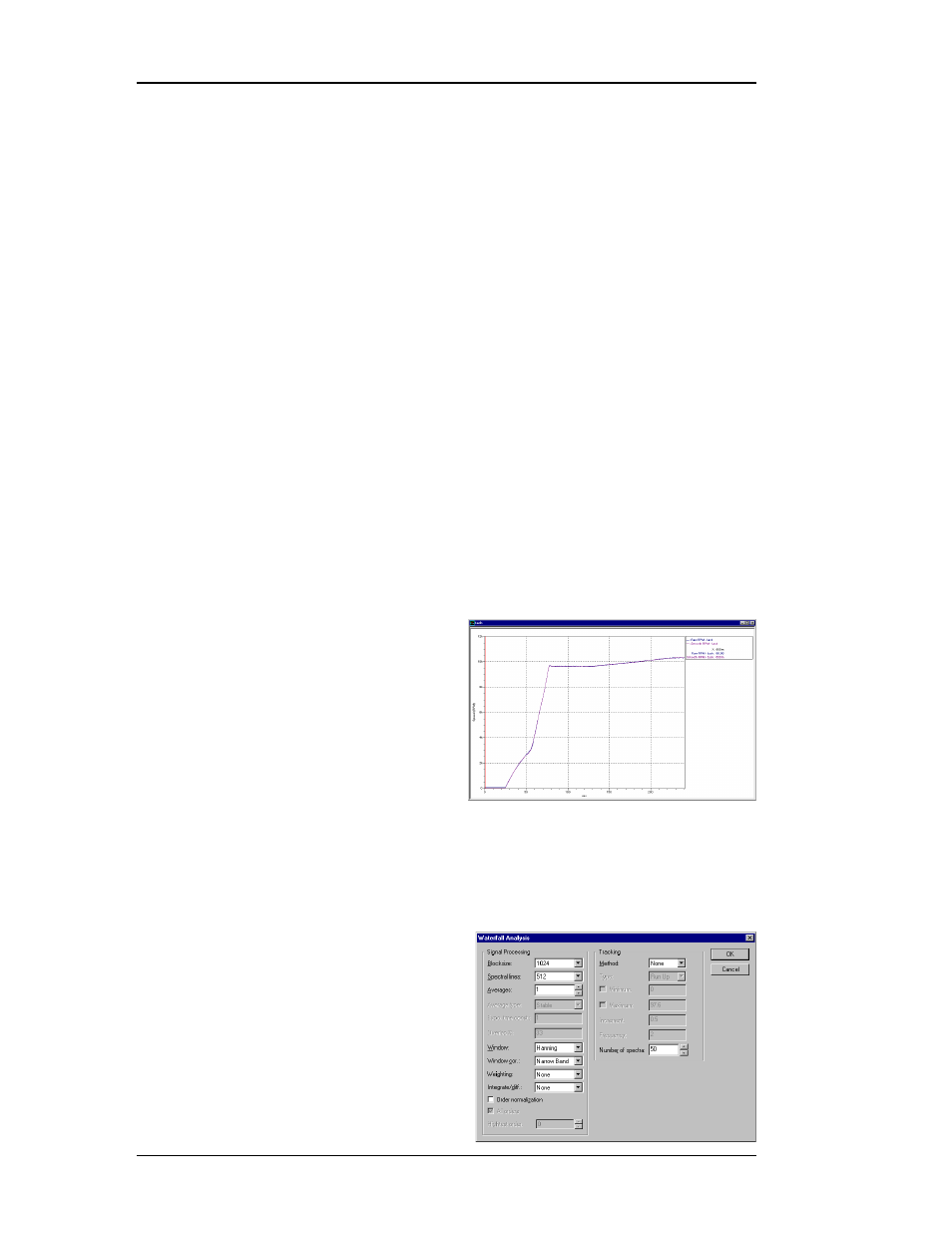Applications, Input signal requirements, Pplications – Measurement Computing Medallion Rotate rev.2.3 User Manual
Page 26: Nput, Ignal, Equirements

26
Medallion Rotate Manual
October 2000
A
PPLICATIONS
The Medallion Rotate Waterfall plot is ideal for non-steady state processes
such as variable speed machinery. The plot shows you the change in the
appearance of the spectra over time. This is particularly useful in the following
applications:
• Analyzing the machine’s behavior during run-up or coast-down.
• Diagnosing amplitude modulation (“beat”).
• Determining the frequency and severity of resonances, such as shaft
critical speeds.
• Analyzing a machine’s response to speed or load variations.
• Isolating non-varying spectral peaks (such as those caused by electric
power or resonance) from speed-dependent peaks (such as vibration).
• Isolating spectral peaks from other processes that are linked to the
machine.
• Ruling out spurious spectral peaks caused by aliasing when using time-
capture equipment that does not have anti-aliasing filtering. See
“Aliasing.”
• Performing Waterfall analysis directly on a DC speed signal to diagnose
torsional problems. For more on torsional analysis, see “Torsional
Analysis.”
I
NPUT
S
IGNAL
R
EQUIREMENTS
Medallion Rotate Waterfall analysis
requires a smoothed speed curve from
performing a Tachometer analysis if you
want to use the order tracking features of
the Waterfall plot. When collecting the
non-tachometer data (vibration,
temperature, …), note the following:
• If you want to see low frequency
data in the Waterfall analysis, make sure that the high pass filter setting
in your analyzer is not excluding the desired low frequencies.
• The sample rate in the analyzer must be at least 2.5 times the maximum
frequency of interest to avoid aliasing.
• The choice of window function for
analysis depends on the type of
resolution you need (amplitude or
frequency resolution).